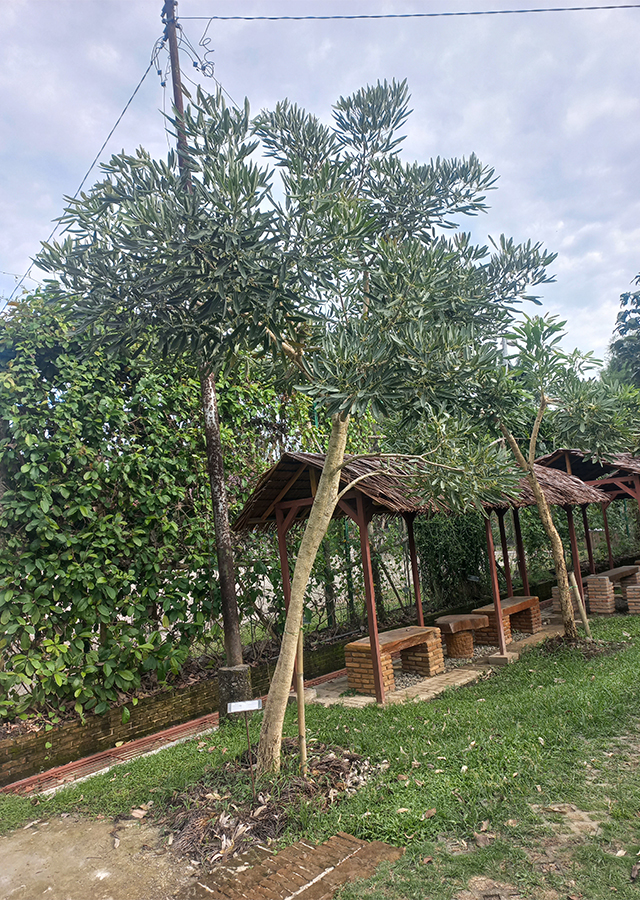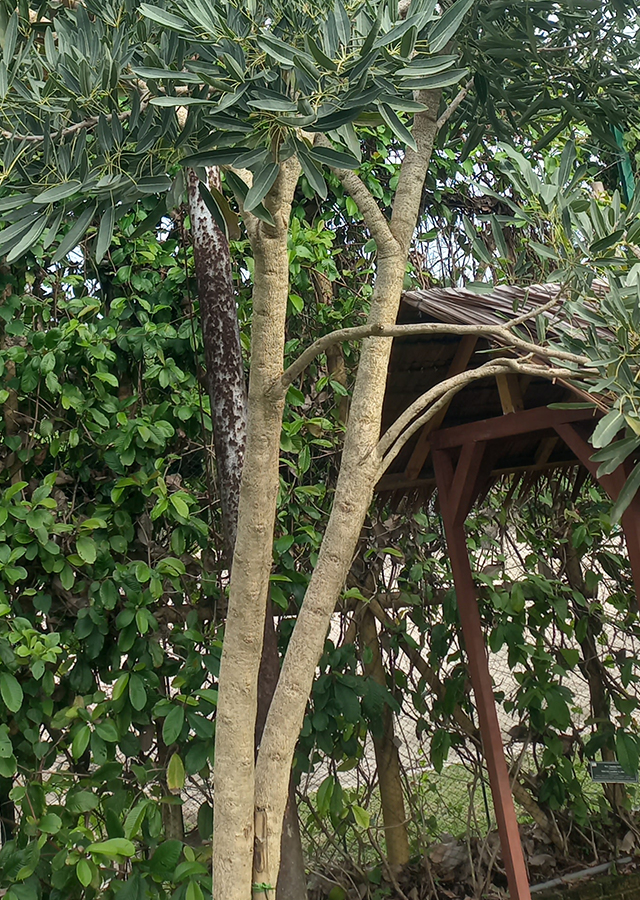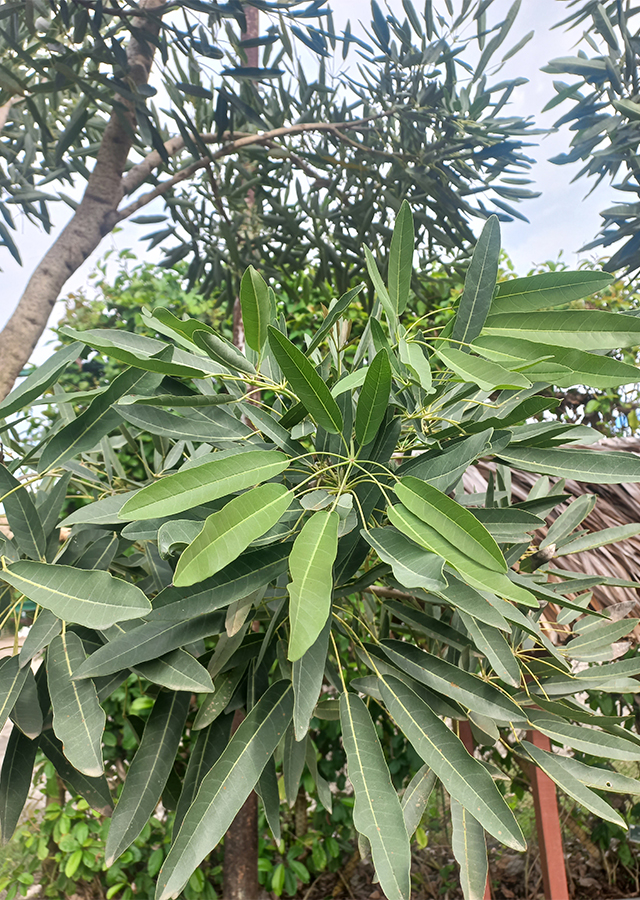Tree of Gold
Tabebuia aurea (Silva Manso) Benth. & Hook.f. ex S.Moore
Bignoniaceae
Location in our garden
Principal



Synonym
Bignonia aurea Silva Manso
Tecoma aurea (Silva Manso) DC.
Bignonia squamellulosa DC.
Habitus
Trees. An evergreen perennial tree that grows 6-15 m tall.
Part Used
Leaves
Bark
Stem
Growing Requirements
Full Sunshine
Habitat
Roadside
Terrestrial
Overview
Tabebuia aurea is native to northern Argentina, Peru, Bolivia, Brazil, and Paraguay, then introduced to Leeward Island, and Puerto Rico. This plant has the ability to absorb carbon compounds that are harmful to humans, so it can help clean the air polluted (air purification). It is used as a drink, medicine and source of materials. It is sometimes grown as a hedge and is often grown as an ornamental and a street tree.
Vernacular Names
Craibeira (Portuguese).
Agroecology
Tabebuia aurea occurrs at altitudes at sea level up to 1,500 m. It does not tolerate medium to heavy shade. Prefers full sun and moderate water. This species grows well in a wide variety of soils and requires little maintenance.
Morphology
- Root - taproot and fibrous undergroud.
- Stem - woody, medium-sized thorny tree with distinctly orange, silvery corky bark.
- Leaves - smooth, opposite, compound with three broad leaflets, the middle one the largest, green, silver/grey, leaflets 5-7, oblong, 5-15 cm long. The leaves often drop just before the flowers appear.
- Flowers - bisexual flowers, yellow, 5-7 cm long, calyx tubular, irregularly lobed; corolla funnel-shaped with irregular spreading limb; stamens 4, didynamous.
- Fruit - slender capsules up to 20 cm long.
Cultivation
Propagation is generatively using seeds and vegetatively by stem cuttings and grafting.
Chemical Constituents
Sterols, alkoloids, flavonoids, 3,4́,5-Trihydroxy-7-methoxyflavone, 3,4-dimethoxybenzoic acid (veratric acid), Methyl cinnamate, β-Sitosterol, Betulinic acid, 6- O -(p-coumaroyl)-catalpol (specioside).
Traditional Medicinal Uses
- Anti-inflammatory, anticancer, anti-edematogenic, and antioxidant.
- It is used for treatment of influenza and snake bites.
- The stem bark infusion or syrup is used to treat colds and flu. The decoction of the bark, instead of water, is indicated in the treatment of general inflammations. In Argentina it is indicated as an abortifacient.
Part Used
Reference Sources
- EFlora of India. (No date). Tabebuia aurea (Cultivated). https://efloraofindia.com/2011/04/01/tabebuia-aurea/. 01-09-2022.
- El-Hawary, Seham S., et al. (2021). Genus Tabebuia: A comprehensive review journey from past achievements to future perspectives. Arabian Journal of Chemistry. Volume 14 (4): 103046. DOI:10.1016/j.arabjc.2021.103046.
- GRAF. (no date). CRAIBEIRA. https://grafufs.com/craibeira-2/. 31-08-2022.
- Kew Royal Botanic Gardens. (No date). Plants of the World Online: Tabebuia aurea (Silva Manso) Benth. & Hook.f. ex S.Moore. https://powo.science.kew.org/taxon/urn:lsid:ipni.org:names:110852-1. 25-08-2022.
- MYBAGEECHA. (No date). Tabebuia Aurea. https://mybageecha.com/products/tabebuia-aurea. 25-08-2022
- National Park of Singapore (2022). Flora Fauna Web:Tabebuia aurea (Silva Manso) Benth. & Hook.f. ex S.Moore. https://www.nparks.gov.sg/florafaunaweb/flora/3/1/3167. 25-08-2022.

